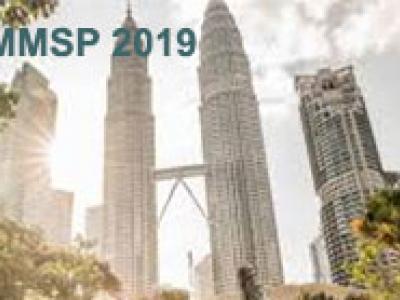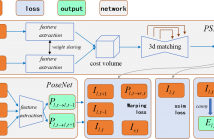
- Read more about Saliency Driven Perceptual Quality Metric for Omnidirectional Visual Content - Slides
- Log in to post comments
The problem of objectively measuring perceptual quality of omnidirectional visual content arises in many immersive imaging applications and particularly in compression. The interactive nature of this type of content limits the performance of earlier methods designed for static images or for video with a predefined dynamic. The non-deterministic impact must be addressed using statistical approach. One of the ways to describe, analyze and predict viewer interactions in omnidirectional imaging is through estimation of visual attention.
- Categories:
 37 Views
37 Views
- Read more about Sinogram Image Completion for Limited Angle Tomography with Generative Adversarial Networks
- Log in to post comments
- Categories:
 50 Views
50 Views
- Read more about Semantic Segmentation in Compressed Videos
- Log in to post comments
Existing approaches for semantic segmentation in
videos usually extract each frame as an RGB image, then apply
standard image-based semantic segmentation models on each
frame. This is time-consuming. In this paper, we tackle this
problem by exploring the nature of video compression techniques.
A compressed video contains three types of frames, I-frames,
P-frames, and B-frames. I-frames are represented as regular
images, P-frames are represented as motion vectors and residual
errors, and B-frames are bidirectionally frames that can be
- Categories:
 47 Views
47 Views
- Read more about IDENTIFICATION OF BUILDINGS IN STREET IMAGES USING MAP INFORMATION
- Log in to post comments
ICIP2019.pdf
- Categories:
 32 Views
32 Views
- Read more about RELAXED ORIENTED IMAGE FORESTING TRANSFORM FOR SEEDED IMAGE SEGMENTATION
- Log in to post comments
In this work, we propose a hybrid method for seeded image segmentation, named Relaxed OIFT, which extends a method by Malmberg et al. to directed graphs, to properly incorporate the boundary polarity constraint. Relaxed OIFT lies between the pure Oriented Image Foresting Transform (OIFT) at one end and the extension of Random Walks (RW) to directed graphs as proposed by Singaraju et al. Relaxed OIFT is evaluated in MR and CT medical images, producing more intuitively correct segmentation results than both OIFT and RW, and being easy to be extended to multi-dimensional images.
- Categories:
 15 Views
15 Views
- Read more about Youtube UGC Dataset for Video Compression Research
- Log in to post comments
This poster introduces a large scale UGC dataset (1500 20 sec video clips) sampled from millions of Creative Commons YouTube videos. The dataset covers popular categories like Gaming, Sports, and new features like High Dynamic Range (HDR). Besides a novel sampling method based on features extracted from encoding, challenges for UGC compression and quality evaluation are also discussed. Shortcomings of traditional reference-based metrics on UGC are addressed.
- Categories:
 139 Views
139 Views
- Read more about From Mapping to Localization: A Complete Framework to Visually Estimate Position and Attitude for Autonomous Vehicles
- 1 comment
- Log in to post comments
Autonomous vehicle framework relies on localization algorithms to position itself and navigates to the destination. In this paper, we explore a light-weight visual localization method to realize the vehicle position and attitude estimation based on images rather than the dominant LIDAR data. We apply SLAM and an offline map correction method to generate a high precision map, which composes 3D points and feature descriptors. For each image, we extract the features and match against the map to explore correspondences.
icip3500.pdf
- Categories:
 25 Views
25 Views
Depth estimation from a single underwater image is one of the most challenging problems and is highly ill-posed. Due to the absence of large generalized underwater depth datasets and the difficulty in obtaining ground truth depth-maps, supervised learning techniques such as direct depth regression cannot be used. In this paper, we propose an unsupervised method for depth estimation from a single underwater image taken "in the wild" by using haze as a cue for depth.
- Categories:
 27 Views
27 Views
- Read more about REAL-TIME LIGHT FIELD DEPTH ESTIMATION VIA GPU-ACCELERATED MULTI-VIEW SEMI-GLOBAL MATCHING
- Log in to post comments
- Categories:
 20 Views
20 Views